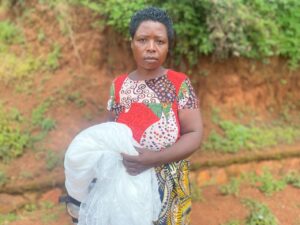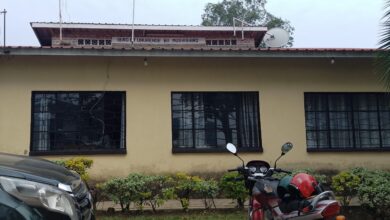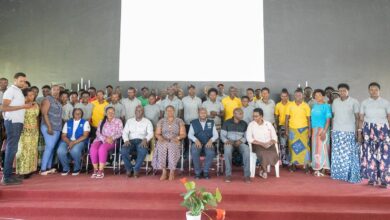GISAGARA: Malaria Campaign targets households through “Isibo” System
March 24, 2025 by Mamedecine.rw

Local authorities in Gisagara District have launched a malaria prevention campaign targeting households through the “Isibo” system, a new strategy designed to ensure every resident is reached.
This initiative involves household visits to assess whether people are sleeping under mosquito nets and maintaining clean surroundings free of stagnant water or overgrown vegetation, both known breeding grounds for mosquitoes.
The Rwanda Biomedical Center (RBC) recently identified Gisagara as one of the districts with the highest malaria incidence. In response, officials are ramping up public health campaigns in high-risk areas, including Gisagara, as part of the national effort to eradicate the disease.
Residents acknowledge the scale of the problem and are actively participating in the prevention measures.
Irena Nyirabanani , a resident of Akabuga Village in Mukindo Sector: “Malaria is a serious concern here. Even after completing treatment, people often remain weak. We are grateful for the mosquito nets. We use them well to protect ourselves.” says Nyirabanani

Denyse Dusabe, the District’s Vice Mayor for Social Affairs outlined ongoing efforts to combat Malaria: “In partnership with RBC, we’re implementing a comprehensive strategy that includes door-to-door education, mosquito net distribution, and indoor spraying. In October 2024, we conducted a mass spraying campaign, and cases dropped soon after. However, once the effects wear off, infections tend to rise again.” she says
“Malaria trends in the district are showing signs of improvement. “We recorded over 57,000 cases in 2021–2022. That number fell to about 39,000 in 2022–2023, and by February 2025, we had registered just over 6,000 cases,” Denyse said. “These figures help us evaluate our strategies and respond accordingly through district hospitals, health centers, health posts, and community health workers.” says Dusabe

Dusabe describes the location of Gisagara District and underlines the challenges of its landscape : “Six of its sectors border marshlands, creating ideal mosquito habitats. “We adapt our interventions based on geography. That includes ensuring timely access to medicine and prioritizing community-level treatment. The district has trained community health workers in malaria diagnosis and treatment. Currently, 2 out of 4 in each village are equipped to treat malaria, with plans underway to fully supply the others through RBC support. About 54% of malaria cases are now treated at the community level, reducing the burden on health facilities and limiting travel for patients,” says Dusabe
“In addition, the district is collaborating with cooperatives, particularly in rice and maize farming near wetlands to spread awareness and help residents improve home structures that may allow mosquito entry. Beyond distribution of nets and spraying, we’re encouraging cooperatives to support families in repairing homes to prevent mosquito infiltration,” she adds
Vice Mayor emphasized that while the district’s goal is to eradicate malaria, the journey will take time. “This is a long-term fight shaped by environmental and socio-economic factors. But we’re committed. Our campaign is now deeply rooted at the village level, with citizens increasingly understanding the importance of prevention as the slogan guiding the campaign is“Malaria eradication starts with me.” she says
Rwanda Biomedical Center (RBC) statistics shows that by the end of 2024, Gisagara accounted for 40% of all reported malaria cases in Rwanda.
Mukamusoni Fulgencie



